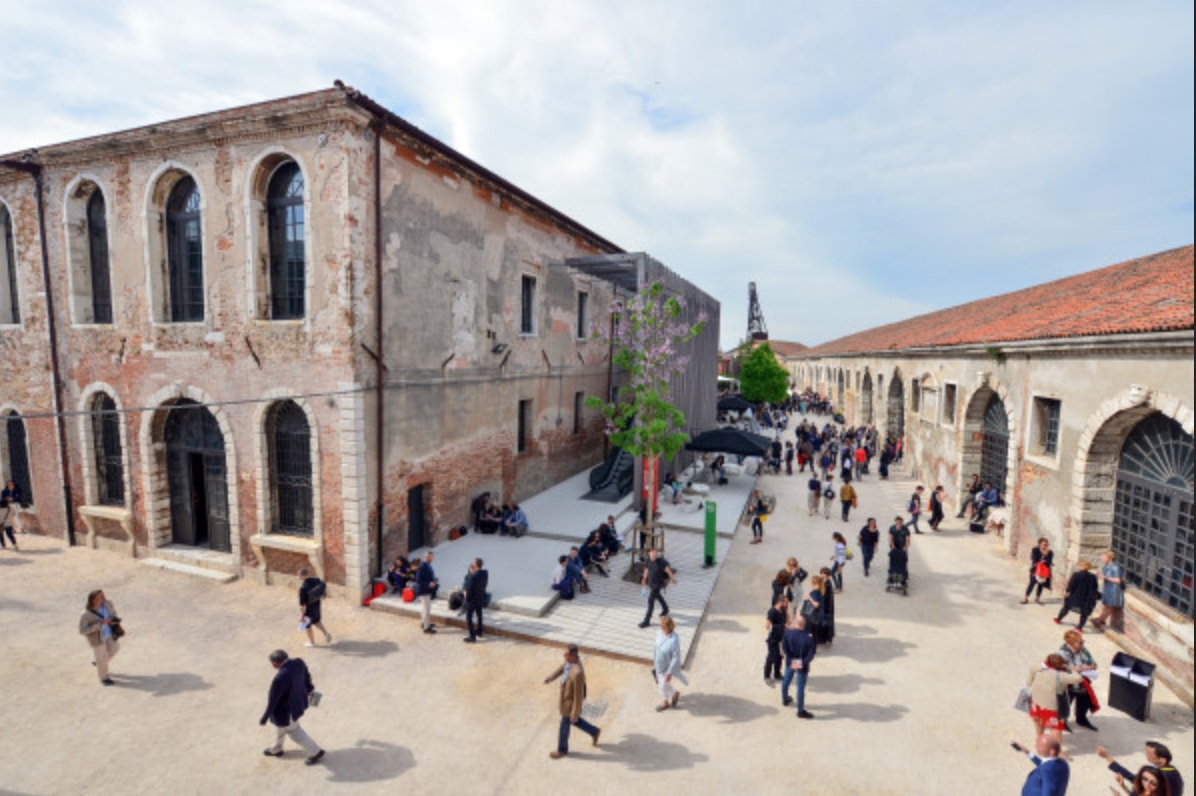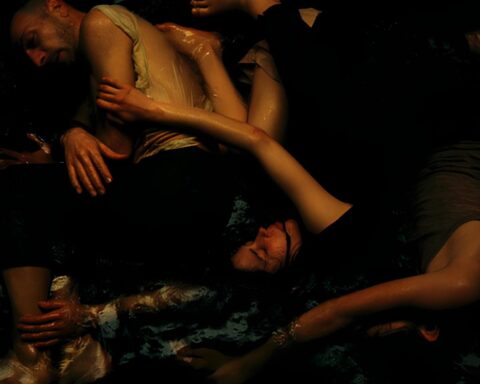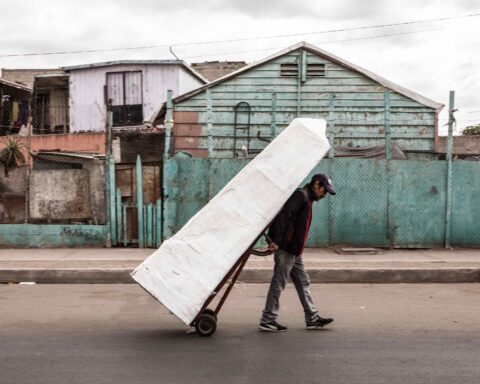The ambivalence and contradictions of the 58th Venice Biennale emerges from its title: May you Live in Interesting Times. Widespread in the Anglo-Saxon world, it derives from a distortion of a traditional Chinese curse first used by Austen Chamberlain towards the end of the nineteenth century. “Interesting times” are times of war, political unrest, challenge and threat. President Baratta suggests that we have to read it in a broader way than the motto implies. He challenges us to interpret this saying as a key to understanding our times, times when conformism and fear produce an over simplified model. The fight against generalization, however, sounds paradoxical and contradictory: how can a curator in an international exhibition not create a cross-section of our ambiguous reality?
Ralph Rugoff has been the director of the Hayward Gallery in London for over ten years. He has come across this oxymoronic challenge that reflects all the limitations and difficulties of the hosting institution. His exhibition at the 2019 Biennale can be read in a speculative way to his project dated 2013: The Alternative Guide to the Universe, when he placed the question to the self-taught artists participating: “Imagine being able to live in a different world. What would you want it to be like?”. In Venice he brings the question to the present and it seems to make adjustments by inviting the same number of male and female artists, increasing the countries of origin of the invited artists, and paying attention to ethnic and gender minorities. Unfortunately, it is still necessary to take into consideration these factors to get a successful exhibition.

Photograph byAndrea Avezzù. Courtesy La Biennale di Venezia
However, his attempt to counterbalance seems to be forced. It is as though he wanted to respond to a pre-filled form to avoid criticism that society would turn to a white, heterosexual, American-male model of power. Speaking of numbers, Rugoff gives us a clarification in the press release: all the invited artists are still alive. This fact goes against last Biennials’ trend (and contemporary art fairs) where artists from the past are exhumed. This demonstrates great support for the new generations of artists, however his justification seems to be lacking as he states that only a living artist is able to talk about our present.
The title entails the absence of a thematic hat, preferring a common direction of the works.
Quoting Opera Aperta, 1962 by Umberto Eco, Rugoff suggests a free interpretation of what the viewer finds in front of him. The displayed works reflect our contemporary world and the problems of our society, the artist thus becomes a prophet of our time. Into the works, the recurring themes are climate change, the birth of new nationalism, racism, economic disparity and the impact of social media and new technologies in the society.
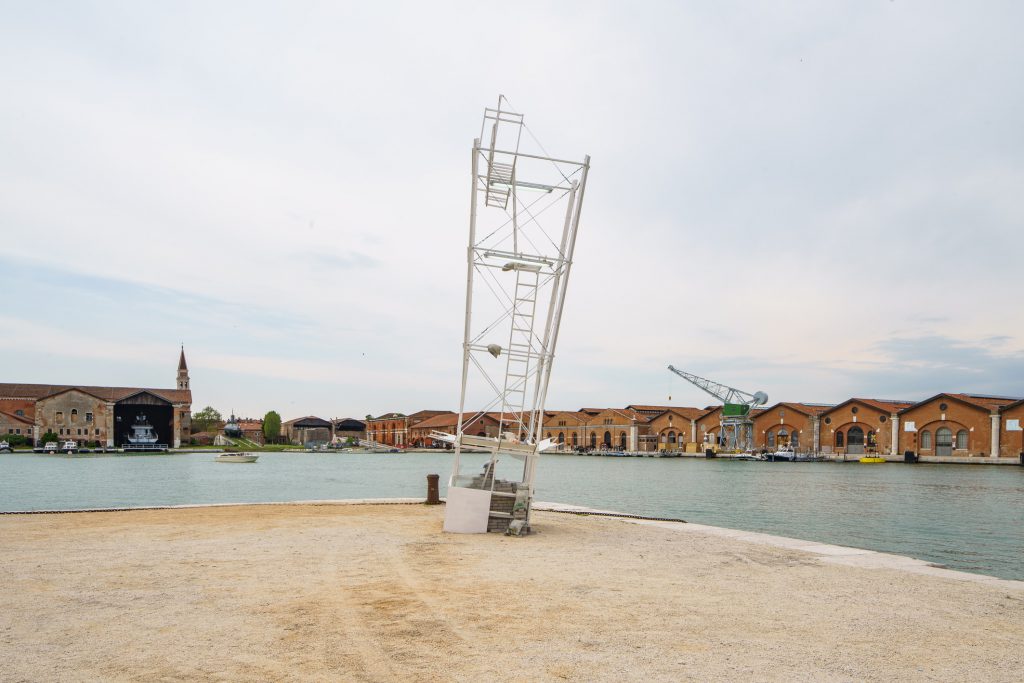
Rugoff introduces something new to the exhibition path, it is articulated with a binary approach through the development of two distinct presentations: Proposition A and Proposition B. He asked each artist to present two different types of works: one of them is set up at the headquarters of the Arsenal (Proposition A) while the second is set up in the Central Pavilion inside the Giardini (Proposition B). This mechanism leads to experiencing the exhibition in a fragmentary way, the viewer’s mind is inclined to bounce between the two venues in search of the proposed companion. Let us analyze the two propositions by Arthur Jafa as an example. When in the Arsenale, we find ourselves in front of huge wheels covered with chains (Big Wheel I, 2019), we struggle to think back to the amazing film The White Album, 2018, shown in Giardini (for which he won the Golden Lion). According to the curator’s press statement, this was the intended effect. But what does this split bring to the viewer? How can two propositions so different from one another be representative and symbolic of an artist’s career? What is the connection that unites them? These questions should be answered by his affirmation: “the goal is to convey a broader impression of the artists’ production and offer the public the possibility of interpreting one type of work in the light of the other”. However Rugoff is aware that the distracted visitor “perhaps will not even suspect that the two exhibitions were made by the same artist”. With 158 works exhibited, maintaining concentration is an arduous task indeed.
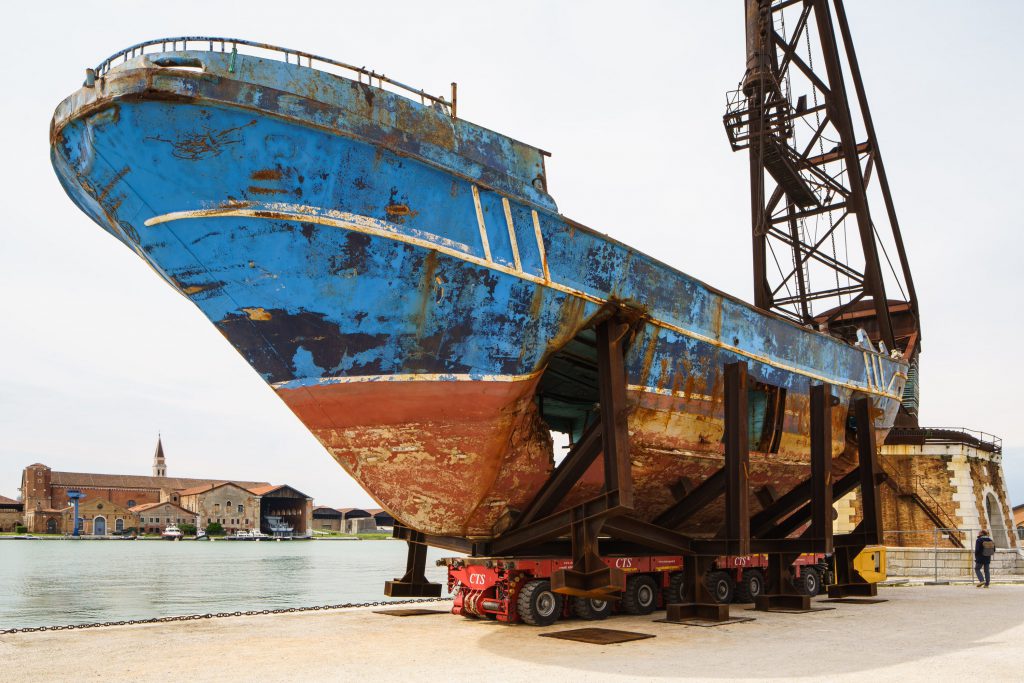
He also affirms that this split reflects the dialogue of the artists with the diversity of the hosting spaces: the Central Pavilion, a neoclassical structure built in 1895 specifically as an exhibition space within the Giardini, and the Arsenale, an industrial structure used for the construction of ships. With the stacking exhibition that seems to fight against a sense of horror vacui, it is difficult to read this dialogue. Upon entry, the exhibition in the Arsenale shows a sense of heaviness and oppression, the spectator is in front of a wooden monolith to which is displayed Double Elvis, 2019 by George Condo, by the way an artwork not representative at all of what we are about to see. The space for the dialogue between the works, between the works and the viewer and between the architecture and the works is reduced to a minimum; a sense of apnea accompanies the viewers along the entire main path, except for the space cut out for video installations, happy islands of exhibition immersion, the only place where the public can find shelter. Hito Steyerl invites us to reflect on the imminent environmental catastrophes, John Raffman embraces us in his dreamlike visions in 3D graphics, Alex Da Corte takes us in a playful and disturbing environment, Korakrit Arunanondchai and Alex Gvojic welcome us to a comfortable environment to show us one anthropological cross-section of the reality from which they come. The few installations isolated from the dialogue with other works, such as Old Food, 2017 – 2019 by Ed Atkins, allow the public to fall into the work, while the largest rooms look like a seventh century quadreria.

Shilpa Gupta, Untitled, 2009.
58th International Art Exhibition – La Biennale di Venezia, May You Live In Interesting Times. Photograph by Italo Rondinella
Courtesy La Biennale di Venezia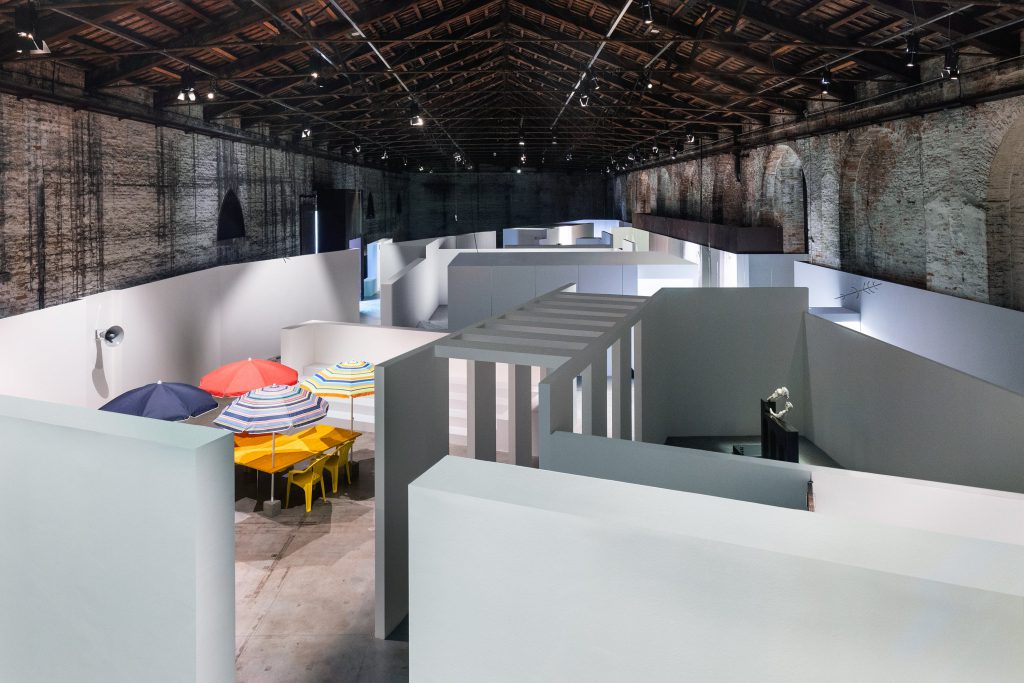
Neither Nor: The challenge to the Labyrinth
(Enrico David, Chiara Fumai, Liliana Moro)
Italian Pavilion at the Biennale Arte 2019
58th International Art Exhibition – La Biennale di Venezia Photograph by Delfino Sisto Legnani and Marco Cappelletti Courtesy DGAAP-MiBAC
We can experience a similar feeling in the exhibition of the Central Pavilion of the Giardini where, most of the time, disparate works coexist in the same room without any aesthetic uniformity or conceptual reference. The proximity of some of them causes an effect of erasure, as in the case of the bright corridor of Ryoji Ikeda followed by the dark room where the video (Silver Lion) by Haris Epaminonda is projected. The eye struggles to adapt to both the entrance and the exit, where the light beam completely destroys the work of Darren Bader and the other works distributed in the surrounding rooms. Shilpa Gupta’s Proposition B consists of a metal gate that clashes noisily against the wall creating a collison, while a spinning cow (Nabuqi’s Do real things happen in moments of rationality, 2018) dominates the center of the room. The non-distracted viewer will certainly be disappointed in reconnecting the work of Gupta, which in this context takes on a playful and spectacular tone, to the delicate and intense installation in Arsenale (For, in your tongue, I cannot fit, 2017-2018).
Involuntarily mimetic the external interventions of the only two Italian artists present in the exhibition. The smoke of Lara Favaretto at the entrance of the Central Pavilion is confused with the bad weather that characterized the opening days of the event. Monowe (The Terminal Outpost), 2017 by Ludovica Carbotta is hidden by the ship Diciotti transported from Catania’s harbour to the Venetian Lagoon by Christoph Büchel showing a fetish that borders on a pornographic spectacularity which only affects the viewers’ coffee break on the terrace. On the other hand, the majority of the national pavilions reflect political and climate issues in a very deep and accurate way. The most impactful pavilions of this year surely are Germany, France, and Lituania. The three of them reflect connected topics from a different point of view and narrative positions. The Dutch Pavilion is a hard reading and cold critique from an enigmatic and amazing artist Natascha Süder Happelmann (aka Natascha Sadr Haghighian): the emptiness of the space, the signs on the wall of the Anne Imhof’s structure, the dryness of the artworks shown, goes against all the spectacularity that dominates the international exhibition. The French pavilion involves the viewer in a really deep and immersive environment, Laure Prouvost brings you on a trip where a sense of freedom takes you by hand with a touching video and the suffused atmosphere in neighbouring rooms.

The Golden Lion-winning Lithuanian Pavilion, Sun & Sea (Marina) addresses the climate change catastrophe in a funny and delicate way. Be careful not to miss the performance, you can only attend it on Saturdays! An exception to the political commitment that has characterized this Biennale comes from the so argued Italian Pavilion curated by Milovan Farronato to which, by the way, one cannot deny a strong scenic effect. The labyrinth he had projected for the Né altra Né questa: La Sfida al Labirinto exhibition dominates the pavilion, some works interact majestically with the display, like the case of Avvinghiatissimi, 1992 by Liliana Moro, which in its hidden niche conveys a strongly romantic, almost erotic, sense. However, other artwork get lost along the labyrinths path. At the end of the day, we might say that something very interesting is certainly there.



